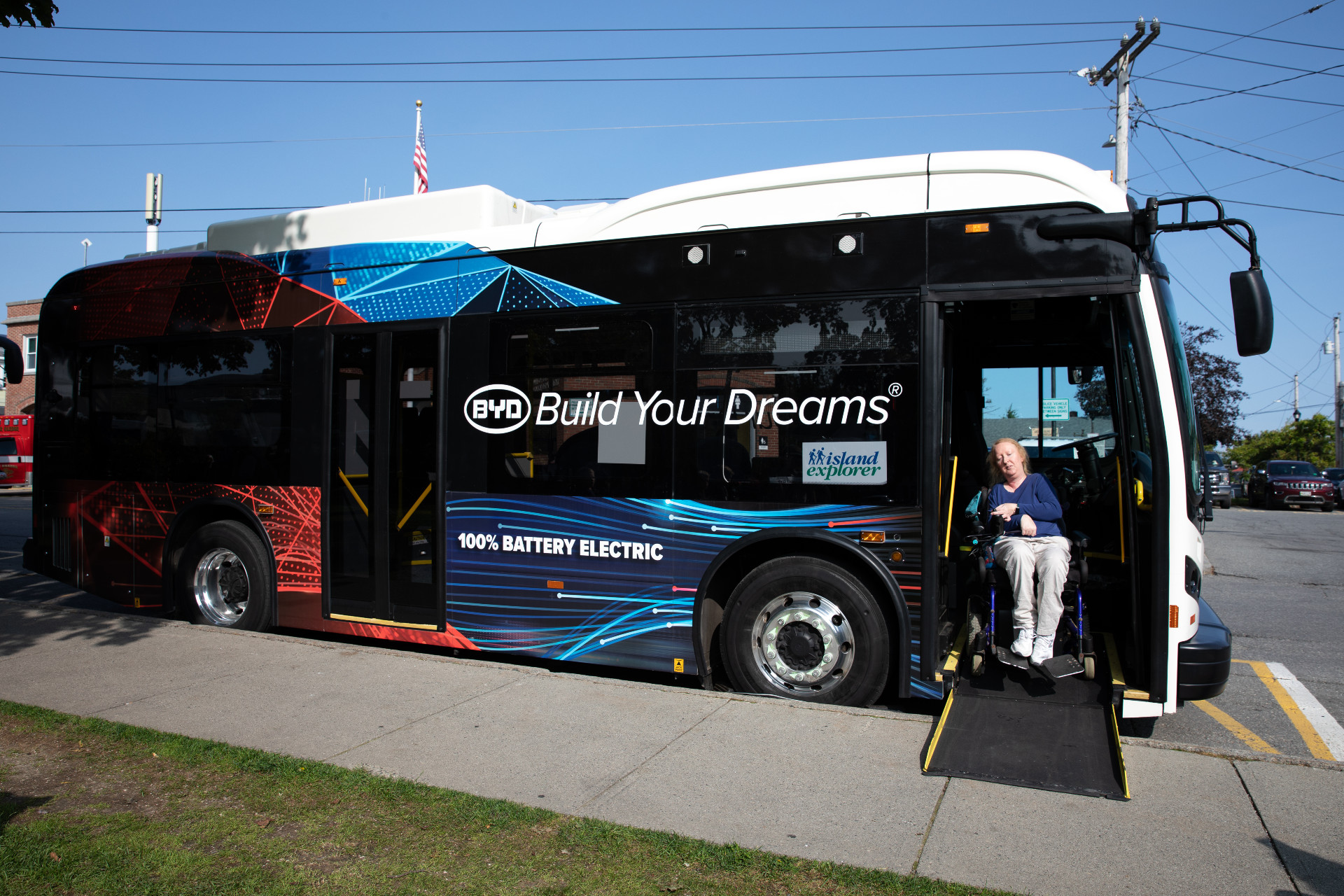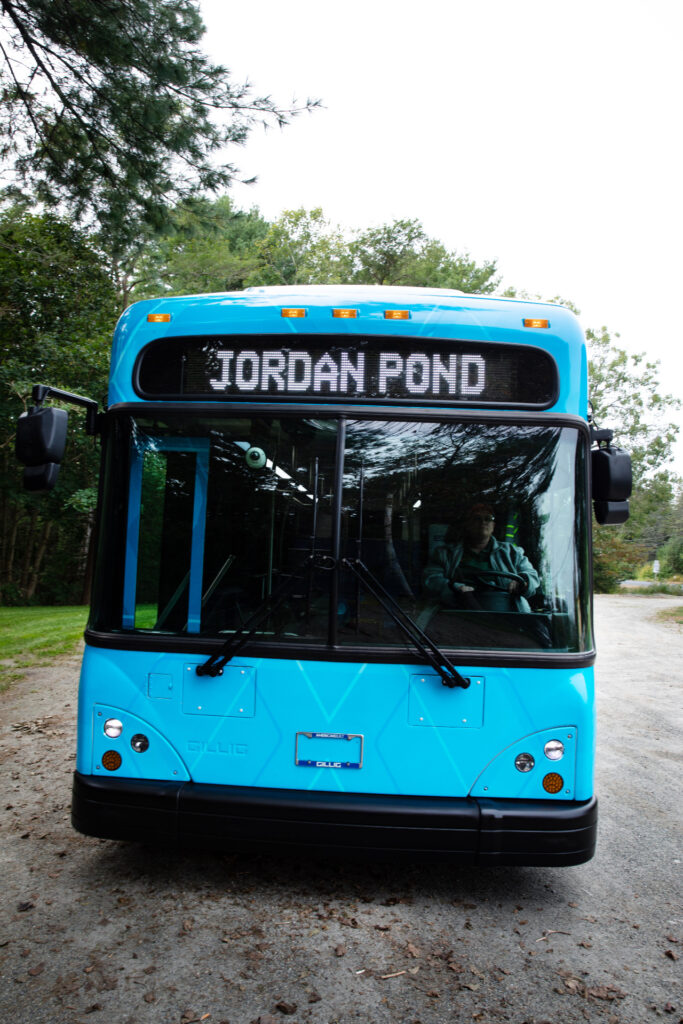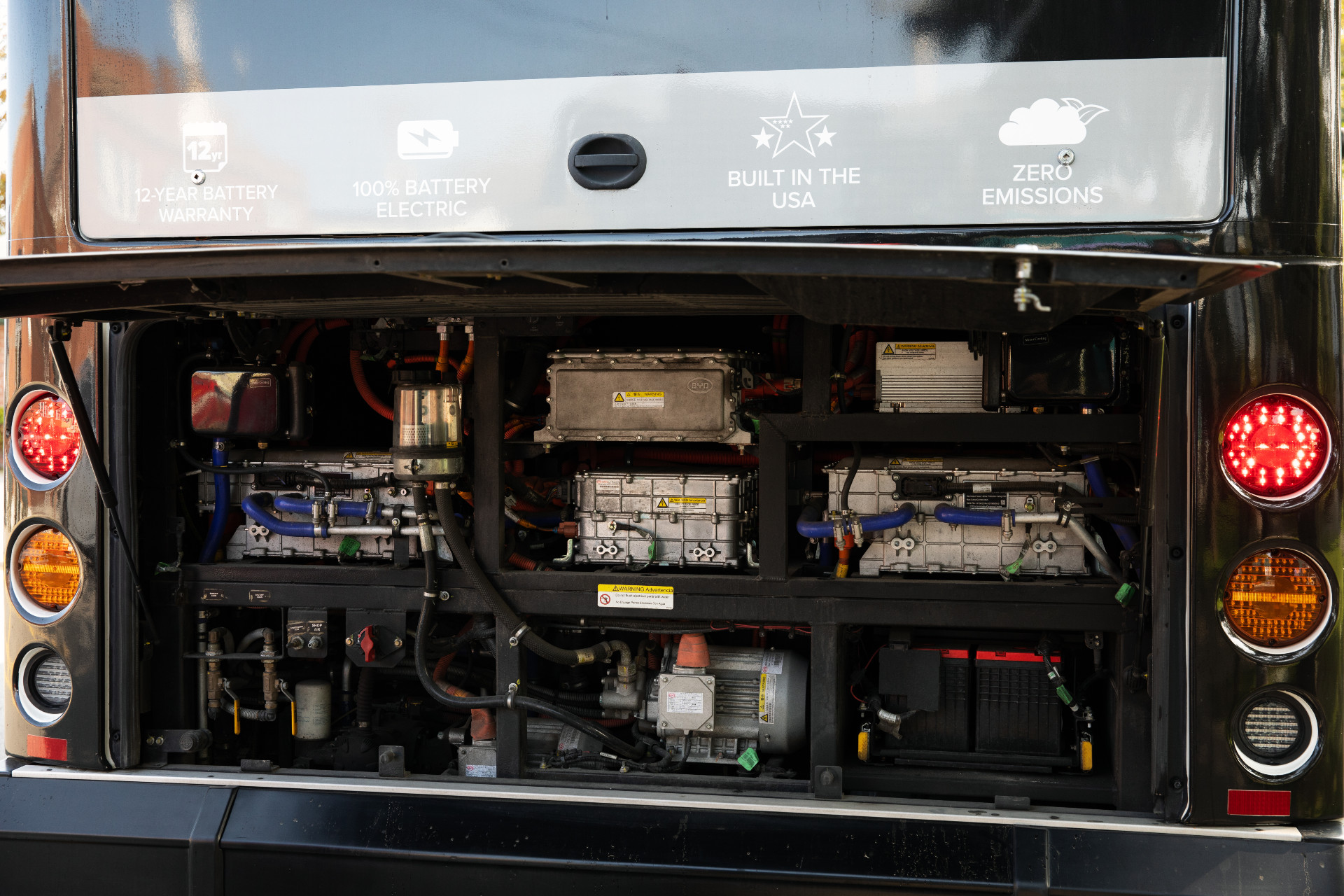Acadia National Park Testing New Battery-Electric Buses
October 26th, 2023
October 26th, 2023
BY STEPHANIE CLEMENT
When the Island Explorer began service in 1999, it was important to the project partners that the bus system help protect Acadia’s natural resources, provide a high-quality visitor experience, and relieve roadway and parking congestion.
Propane was selected as the most viable alternative fuel that would help reduce air pollution emissions, and more than 9.1 million passengers have been served by the Island Explorer since the bus system’s founding.
Technology has changed significantly over the last two decades, and electric and hybrid buses are being incorporated into fleets across the globe. In 2022, the National Park Service identified 81 operating transit systems in 52 national park units. These systems, which include ferries, trolleys, trams, shuttle buses, and aircraft, carried over 26.6 million people last year. The recapitalization cost over the next decade for these transit systems is estimated at $151 million.
The Island Explorer has an active fleet size of 32. Most of the current buses are scheduled to be replaced by the end of the decade. The Acadia National Park Transportation Plan emphasizes that growth will also be needed in the Island Explorer, as visitors start to use the Acadia Gateway Center in 2025 and as new timed entry reservation systems are established in congested areas of the park.
National Park Service (NPS) Landscape Architect and Project Manager BriAnna Weldon pointed to President Biden’s Executive Orders 14008 and 14057 as the basis for why the NPS is testing new battery-electric buses in national parks such as Acadia and the Grand Canyon this summer. These Executive Orders set a goal for procuring and incorporating clean and zero-emission vehicles into federal, state, local, and Tribal government fleets by 2035 to combat the climate crisis.
Two companies, Gillig and BYD USA, each ran one of their battery-electric bus models for one week from September 17th to October 1st on designated Island Explorer routes and up Cadillac Mountain.

Schoodic Institute Science Information Specialist Emma Albee exits the BYD USA bus at the Bar Harbor village green during its pilot run in Acadia National Park this fall. (Photo by Julia Walker Thomas/Friends of Acadia)
Apart from any service to Cadillac, the buses will be available for the public to ride as part of regular Island Explorer operations. Representatives from the U.S. Department of Energy’s National Renewable Energy Laboratory (NREL) will also be on hand to collect performance data on the buses during the tests.

The GILLIG Battery Electric Bus during a battery capacity test in Acadia National Park this fall. (Photo by Julia Walker Thomas/Friends of Acadia)
“The data will be used by national parks to best assess how to electrify their transit systems, given the mandate for zero emissions,” said Andrew Kotz, Senior Research Engineer for Commercial Vehicles at NREL. “Glacier is different from the Grand Canyon and from Acadia, so there will be different factors for each park to consider.” Kotz had previously co-authored a study on considerations for electrifying fleets at Zion, Bryce Canyon, and Yosemite National Parks.
Kotz also pointed out that national park transit systems are very different than city transit systems: “National parks are frequently remote, so there may be challenges with getting adequate electricity infrastructure and service to the area. The terrain is also different in each park.” Kotz mentioned that changes in elevational grade and heating/air conditioning can affect the range that electric buses can travel. He added that there have been great advancements in battery design that have improved the capabilities of electric buses.
Paul Murphy, Executive Director of Downeast Transportation, the non-profit organization that runs the Island Explorer, pointed to the bus system’s history of incorporating alternative fuels and said, “Downeast Transportation/Island Explorer is certainly moving away from fossil fuels at some point in the future. At this time, battery-electric [technology] seems like the leading candidate for our next fuel source.”
Murphy pointed to a few factors that present challenges, such as range limitations (especially in hilly terrain and cold weather), the cost of charging infrastructure, the manufacturers’ ability to perform warranty work in Maine, and the higher cost of electric buses, estimated at more than three times the cost of the current propane buses. Maintenance costs are lower since battery-electric vehicles do not need oil changes, new transmissions, spark plugs, and more.
Data that will be collected at Acadia during the upcoming tests may include average bus speed, energy usage per trip, daily distance traveled, peak energy demand, and the use of heating, ventilating, and air conditioning. Kotz mentioned that even if the buses tested at Acadia end up not being the right bus models for the park, the data collected will point to things like the size of battery that may be needed at Acadia, locations for installation of charging infrastructure, and potential changes in route/service design.
When asked what the bus companies gain from these tests, Kotz replied that the data can help spur advancements in technology and design. Because transit in national parks is different than in cities, bus companies may learn how to better adapt their batteries and refine their bus models to serve rural and national park environments. Kotz concluded, “We’re learning together, and that’s exciting.”

Battery Bank at the rear of the BYD USA 100% Battery Electric Bus. (Photo by Julia Walker Thomas/Friends of Acadia)
STEPHANIE CLEMENT is Friends of Acadia’s Vice President of Conservation.